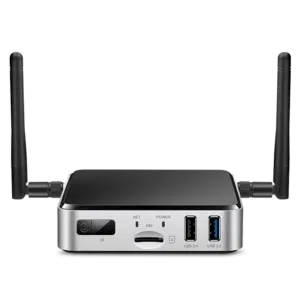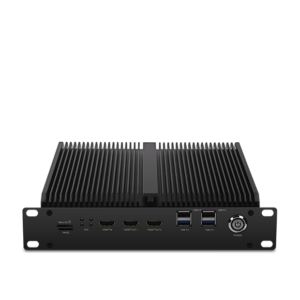The Impact of Running AI on Edge Devices
The Impact of Running AI on Edge Devices
Blog Article
The Impact of Working AI on Edge Devices
Real-World Applications of AI on Side Products
Synthetic intelligence (AI) is no further restricted to the region of big, centralized information centers. Because of improvements in technology, edge products today perform a key role in deploying AI right wherever knowledge is generated. But what does AI on side units suggest, and why is it creating this type of hype? Here, we'll explore how edge ai devices works in the real world through side products and reveal its wide range of practical applications.

What's AI on Side Products?
AI on side products refers to deploying synthetic intelligence methods directly on products like smartphones, cameras, drones, or IoT sensors. These devices do not want usage of centralized servers for processing data; alternatively, they accomplish examination and decisions domestically, creating the method quicker, more effective, and often more secure.
The "edge" here only identifies computing performed near or at the source of data generation, rather than depending on the cloud. This shift is driven by the demands for real-time information handling and the need to minimize latency, increase solitude, and minimize bandwidth usage.
Critical Real-World Programs of Side AI
1. Smart Detective
AI-powered cameras built with skin recognition, action detection, and anomaly detection are transforming detective systems. Side products in that domain can analyze video streams in real-time to spot suspicious actions, remove fake sensors, and increase public safety. For instance, AI methods may find uncommon actions and alert authorities quickly without the need to deliver movie data to a central host for analysis.
2. Healthcare Tracking
Wearable devices and portable medical equipment are leveraging m.2 ai accelerator for controlling wellness information more efficiently. Edge-based AI in units like wellness trackers and smartwatches displays users' vitals, such as heart rate, oxygen degrees, or blood pressure, in real-time. These methods analyze information domestically and give instantaneous feedback, paving just how for quicker treatment during emergencies.
Beyond wearables, sophisticated medical imaging units built with on-device AI may find signals of disorders like cancer, allowing early in the day diagnoses even in remote parts without internet connectivity.
3. Autonomous Vehicles
Self-driving vehicles are among the absolute most well-known types of side AI in action. With receptors, cameras, and LiDAR systems helping as knowledge places, AI computations take place onboard these cars to create split-second decisions. From detecting pedestrians and obstacles to moving town streets, side AI assures that the car runs easily and efficiently. The real-time handling convenience of edge products reduces the reliance on high-latency cloud programs, ensuring security in life-critical scenarios.
4. Retail Analytics
Side products in retail situations are helping businesses analyze client behavior. Clever cabinets and AI-equipped cameras may identify client choices, check supply, and even modify in-store experiences in actual time. The information created from these units assists retailers make knowledgeable decisions, improve customer satisfaction, and optimize catalog management.

5. Commercial IoT
Factories and professional crops are adopting side AI to revolutionize their tracking and automation processes. AI-powered detectors on machinery identify possible flaws well before they lead to costly failures. Predictive maintenance driven by edge AI reduces downtime, promotes productivity, and ensures security on the manufacturing floor.
6. Customized Activities in Customer Units
Your smartphone is an excellent exemplory instance of how edge AI personalizes individual experiences. Characteristics such as voice assistants, flexible camera settings, and on-device language interpretation use real-time AI to answer consumer needs without sending sensitive data to additional servers. That fosters both comfort and solitude for the conclusion user.
The Growing Impact of Edge AI
The usage of AI on side products continues to spike, driven by industries' increasing demand for low-latency, real-time research, and larger information privacy. Their applications are reshaping industries including healthcare and automotive to public protection and retail. By getting AI's power closer to where data is generated, side devices are not only improving performance but additionally showing the limitless potential of advancement in the present related world. Report this page